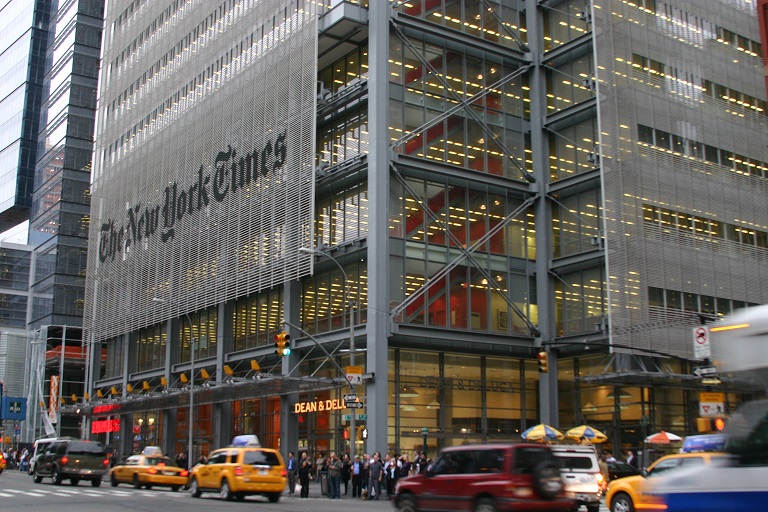Journalism in NYC
New York City has been called “The Media Capital” of the world and it makes sense to think of it as such as it is the birthplace of two of the biggest news outlets, the Washington Post and the New York Times. The earliest newspaper in the City was published in November of 1725 called The New-York Gazette, described as “a small two-page paper, poorly printed, and containing chiefly foreign news from three to six months old, state papers, lists of ships entered and cleared, and a few advertisements” by 1939 Pulitzer Prize winner Frank Luther Mott. During the period between 1725 and 1800 roughly 120 newspaper titles were produced so what these two papers specifically stand out and allowed them to rise to the top?
The New York Times was founded in 1851 as a ‘penny paper’, so what separates it from every other cheap paper given out on the street? Well The Times often traded appealing to a larger mass of people for appealing to higher-ups, a more “intellectual and cultured” audience. But it didn’t skyrocket because of that, they first began to get really big during and after the two world wars and the sinking of the Titanic because of their extensive coverage of the events that not many other outlets made the effort to offer. The only journalist to witness the bombing of Nagasaki, William L. Laurence, was part of the New York Times. They had journalists that stayed in Cambodia as it fell to the Khmer Rouge regime, and even today they have people over in the Middle East documenting the movement of the Islamic State. They take large risks and they reap large rewards.
The Washington Post was a bit of a different situation. It was founded in 1877 as an outlet for the Democratic party but was sold in 1889 to a Republican cabinet member and backflipped its way into becoming a conservative outlet. After that it was sold again in 1905 to John L. McLean, this time with a focus on drama and sensationalism making it lose much of the credibility it had before. McLean died and the paper fell into bankruptcy. It was revived in 1933 when it was auctioned off and sold to Eugene Meyer. They started to rebuild the character of the paper as independent with thorough and accurate reporting. At this time it also became known for the Herblock cartoons. The paper continued to expand and perfect its public reputation. In 1971 the paper began to post pieces of documents from the U.S. Department of Defense that listed top-secret details about the Vietnam war. For a while it was suspended from publishing by the Department of Defense, but the U.S. Supreme Court lifted this order within the same year.
New York City has a long and vivid history of journalism, the majority of which is not covered here. It saw the rise of some of the earliest journalism in the United States and two of the biggest news outlets in the world. The city is still a major site for journalists just starting out with schools like Columbia University, though some people question if it will stay that way because of the current political tensions.

Breanna is one of our most active writers. She enjoys writing articles about politics and world events. She also participates in Impressions, Chamber Singers,...


Ryan Ripepi • Nov 21, 2019 at 9:49 am
Awesome article Breanna! Very Interesting!
Mrs. Sitts • Nov 20, 2019 at 3:17 pm
Very interesting, Breanna! I learned something new today. 🙂